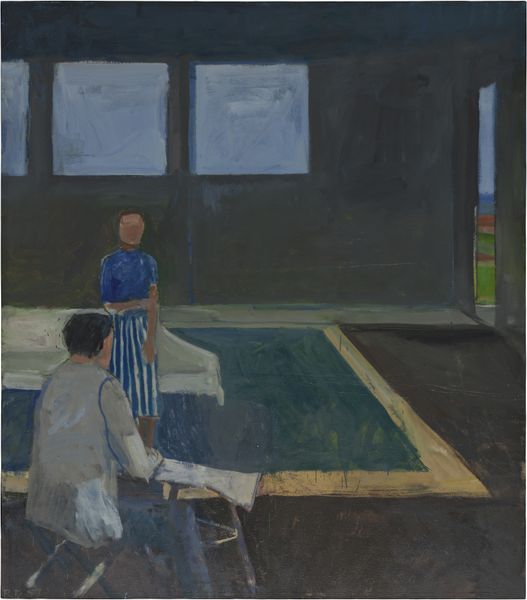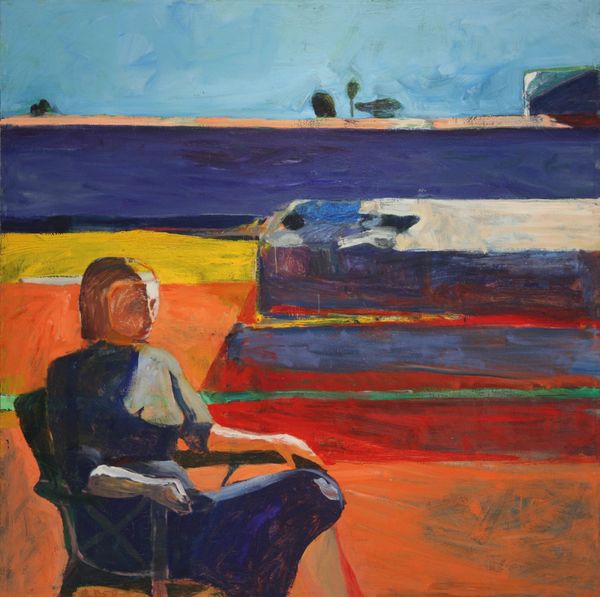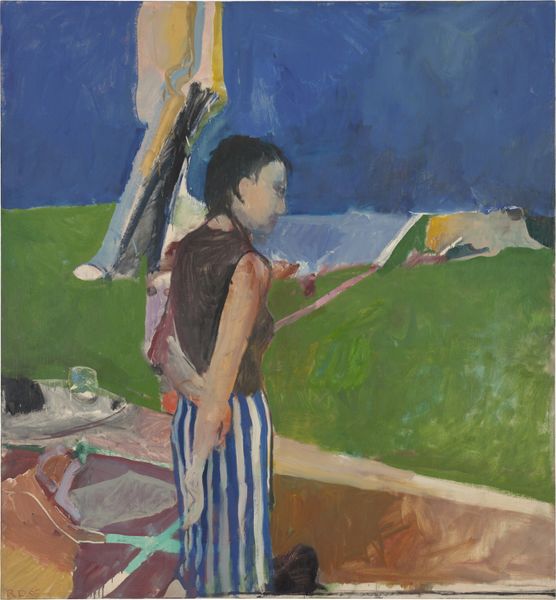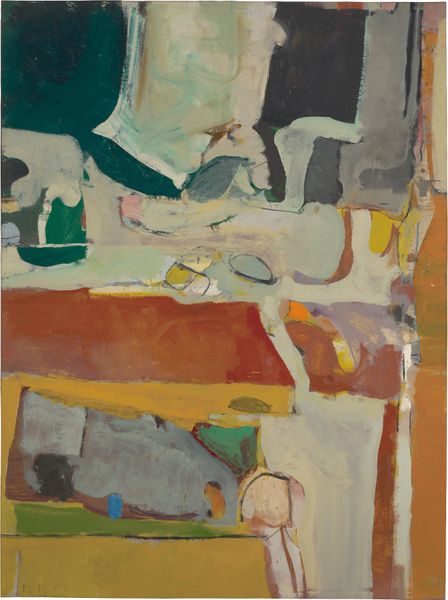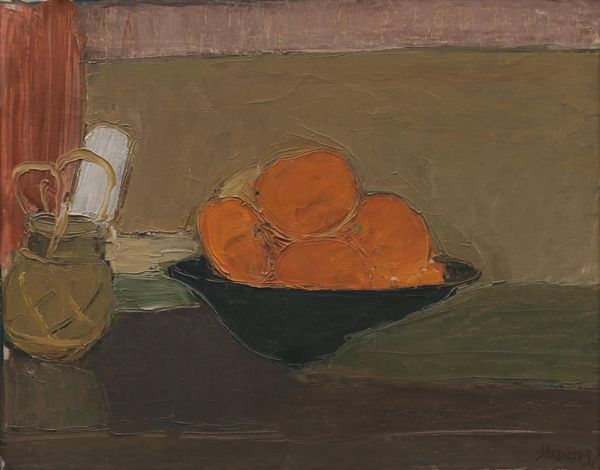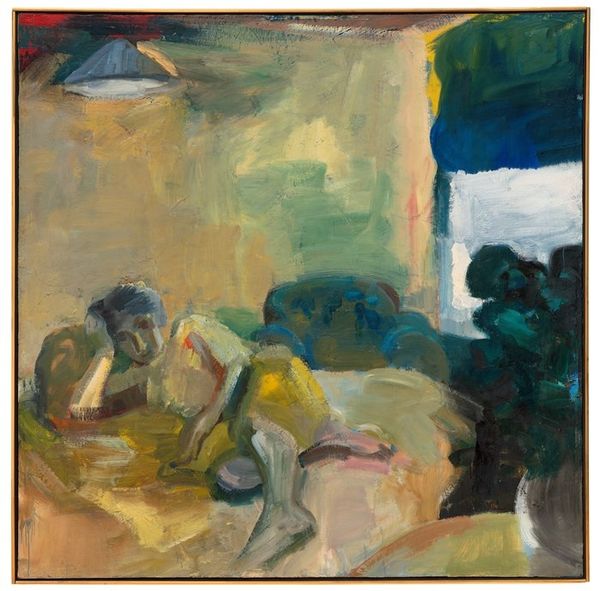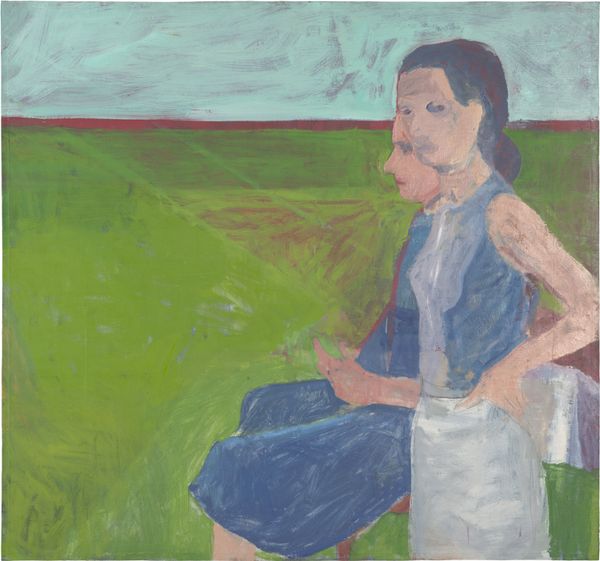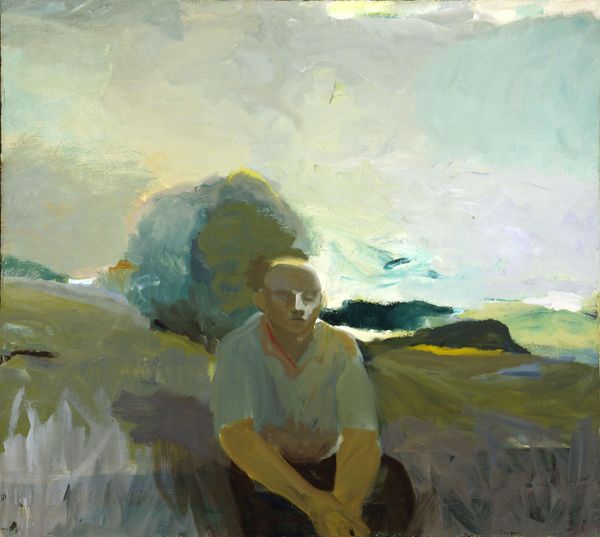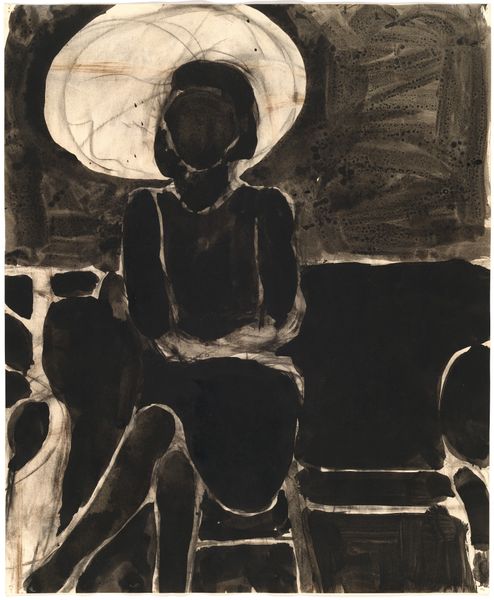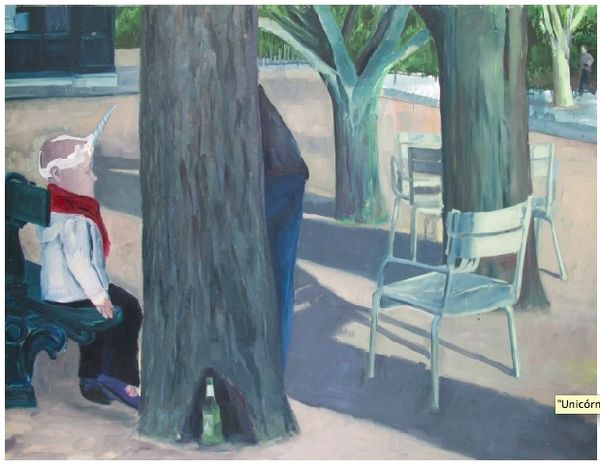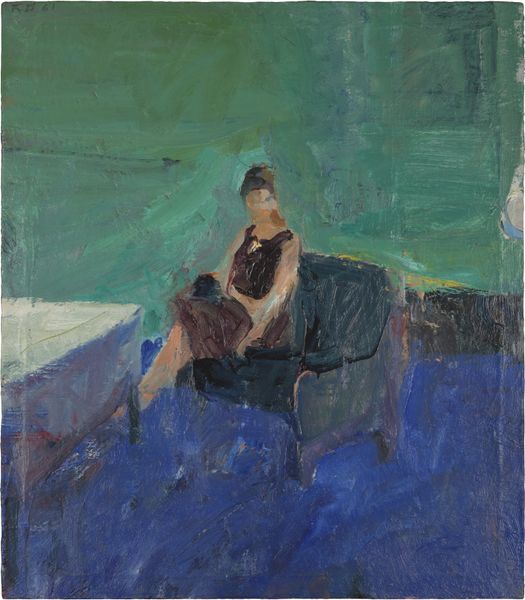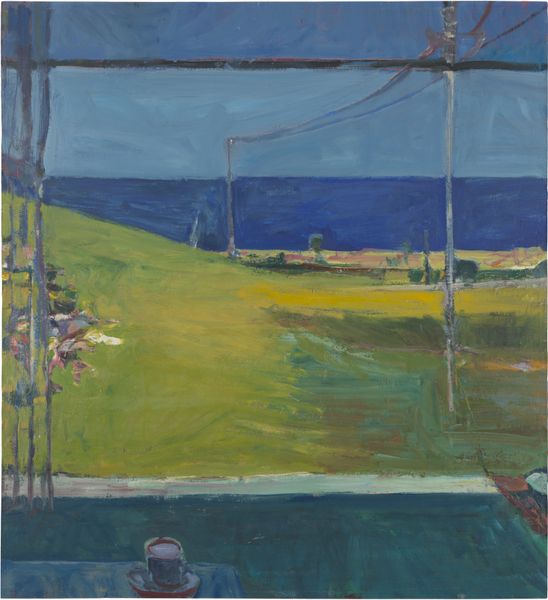
Copyright: Eric Fischl,Fair Use
Editor: This is Eric Fischl's "Best Western Study" from 1983, an oil painting showing a young boy with oranges near a pool. The somewhat ominous and dark backyard scene gives it a sense of foreboding, at least for me. What do you make of this piece? Curator: Ominous is a great word for it, isn't it? Fischl often explores the disquieting side of suburban life, that simmering unease just beneath the surface of perfect lawns and backyard pools. He’s interested in the tensions within the family, particularly, and adolescence… the kind of moment where childhood innocence starts slipping away. Do the oranges remind you of anything, placed as they are? Editor: Well, I immediately thought of classic still life paintings, you know, like Cézanne, but those don't usually have this tense mood! The figurines down in the left seem like such a sharp contrast too, adding to the confusion of youth. Curator: Exactly! There's the art historical echo of the still life, a traditional, formal approach. But then Fischl shoves it into this unsettling context. Are those toy soldiers? Like childhood games set against something… else. Think of it as a Freudian fruit bowl next to a battle scene. The artificial light casts long shadows. Fischl wants us to question what lurks just beyond what's visible, just below consciousness. Do you think it achieves it? Editor: Yeah, the combination definitely throws you off balance. It's making me think about how childhood games sometimes foreshadow adult conflicts. And maybe oranges…aren’t always just oranges. Curator: Indeed, not always just oranges. Fischl definitely leaves room for the viewer to feel uneasy and to start asking those slightly uncomfortable questions. It might be a coming-of-age, on a stormy night.
Comments
No comments
Be the first to comment and join the conversation on the ultimate creative platform.
